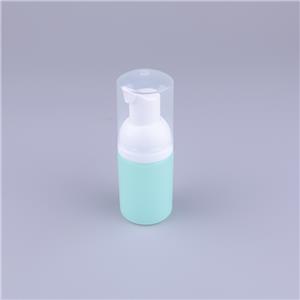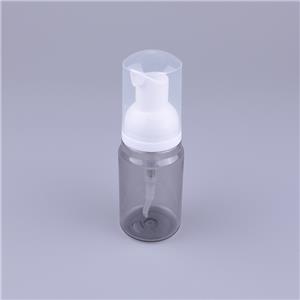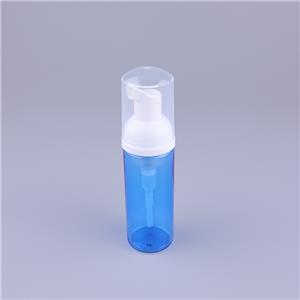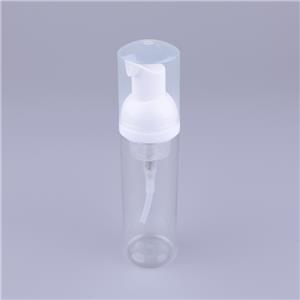- Home
- >
- News
- >
- Public Information
- >
- Temperature tolerance of plastic products
Temperature tolerance of plastic products
The temperature tolerance of plastic products is the core indicator for measuring their structural stability and performance under different temperature environments, which directly determines the applicable scenarios and service life of the product. The temperature tolerance of plastics varies greatly from sub zero cold chain environments to high-temperature industrial equipment, from daily tableware to aerospace components. This difference is due to the comprehensive effects of material molecular structure, processing technology, and modification techniques. A deep understanding of the temperature tolerance characteristics of plastic products is of great significance for material selection, product design, and safe use.
1、 Core definition and influencing factors of temperature tolerance
The temperature tolerance of plastic products refers to the temperature range within which the material does not undergo significant physical or chemical degradation (such as softening, deformation, cracking, degradation) under certain time and stress conditions. It is usually divided into two categories: continuous use temperature and short-term use temperature. Continuous use temperature is the upper limit of the temperature at which materials can work stably for a long time (thousands to tens of thousands of hours); Short term use temperature refers to the maximum temperature that a material can withstand in a short period of time (minutes to hours), beyond which irreversible damage may occur.
The fundamental impact of molecular structure on tolerance
The molecular structure is an intrinsic factor that determines the temperature tolerance of plastics. Molecular chain rigidity is a key indicator: plastics containing rigid groups such as benzene rings and heterocycles in the molecular chain (such as polycarbonate PC, polyphenylene sulfide PPS) have greater difficulty in molecular chain movement and significantly better heat resistance than plastics containing flexible methylene chains (such as polyethylene PE, polypropylene PP). For example, polyetheretherketone (PEEK) has a rigid structure with a large number of benzene rings and ether bonds in its molecular chain, and can be continuously used at temperatures up to 260 ℃, far exceeding ordinary plastics.
Crystallinity also affects heat resistance: Crystalline plastics (such as PE, PP, PA) have a crystal structure formed by the regular arrangement of molecular chains, and have higher heat resistance than non crystalline plastics (such as PS, PC). The higher the crystallinity, the stronger the intermolecular forces, and the better the heat resistance. For example, highly crystalline HDPE has a continuous use temperature 10-15 ℃ higher than LDPE. But crystalline plastics have a clear melting point, beyond which they will quickly soften; Amorphous plastics gradually soften with increasing temperature and have no obvious melting point.
Molecular weight and cross-linking degree also play an important role: under the same structure, the higher the molecular weight, the tighter the molecular chain winding, and the slightly higher the heat resistance; Cross linked structures (such as cross-linked PE) form a three-dimensional network structure that restricts the movement of molecular chains, significantly improving heat resistance. The continuous use temperature of cross-linked PE hot water pipes can reach 95 ℃, far exceeding the 60 ℃ of ordinary PE.
The actual impact of external factors on tolerance
The processing technology can change the actual heat resistance performance of plastics: the cooling rate during injection molding affects crystallinity, and rapid cooling can reduce the crystallinity of crystalline plastics, leading to a decrease in heat resistance; Annealing treatment can improve crystallinity and enhance heat resistance. For example, after annealing at 120 ℃, the hot deformation temperature of PA6 products can be increased by 10-15 ℃.
Additives are an important means of regulating temperature tolerance: heat stabilizers (such as calcium zinc stabilizers in PVC) can delay material high-temperature degradation and prolong heat resistance time; Plasticizers reduce heat resistance. Soft PVC, due to the addition of a large amount of plasticizers, has a continuous use temperature 20-30 ℃ lower than hard PVC; Reinforced fillers (such as glass fiber and carbon fiber) can increase the thermal deformation temperature of plastics by 30-80 ℃ by enhancing intermolecular forces. For example, the thermal deformation temperature of glass fiber reinforced PA66 can reach over 250 ℃, far exceeding the 60 ℃ of pure PA66.
The stress and medium in the usage environment can reduce the actual tolerance: the heat resistance of plastics under stress is significantly lower than that under no stress, such as the thermal deformation temperature of PC products under load (about 130 ℃ at 1.82MPa), which is more than 50 ℃ lower than that under no load. At the same time, contact with media such as grease and solvents can accelerate the swelling or degradation of plastics at high temperatures, narrowing the effective temperature range.
2、 Temperature tolerance range and characteristics of common plastic products
The temperature tolerance of different types of plastics varies significantly, and can be divided into three categories based on heat resistance: low heat resistance, medium heat resistance, and high heat resistance, each suitable for different scenarios.
Low heat resistant plastic (continuous use temperature ≤ 80 ℃)
This type of plastic is mainly general-purpose plastic, with high molecular chain flexibility and low crystallinity, suitable for ambient temperature or mild temperature control scenarios.
Polyethylene (PE): LDPE can be used continuously at a temperature of 50-60 ℃, while HDPE can reach 70-80 ℃ due to its high crystallinity. It can withstand boiling water at 100 ℃ in the short term, but long-term contact will slowly oxidize and age. Mainly used for packaging food at room temperature, cold water pipelines, etc., not suitable for high temperature scenarios.
Polypropylene (PP): It can withstand temperatures of 80-100 ℃ continuously and can withstand temperatures of up to 120 ℃ in the short term. It is a widely used plastic with good heat resistance. The methyl side groups in its molecular chain enhance rigidity and can be used to make microwave lunch boxes (marked as "microwaveable"), disposable water cups, etc. However, prolonged exposure to temperatures exceeding 100 ℃ can cause embrittlement.
Polystyrene (PS): Continuous use temperature of 60-70 ℃, softening and deformation will occur beyond 80 ℃, with high brittleness and poor heat resistance. Mainly used for low-temperature food packaging, stationery, etc., not suitable for high-temperature environments.
Soft polyvinyl chloride (PVC): Due to the migration of plasticizers, the continuous use temperature is only 40-60 ℃, and harmful substances are easily released at high temperatures. It is mainly used for low-temperature hoses, toys, etc. It is strictly prohibited to come into contact with high-temperature food.
Medium heat-resistant plastic (continuous use temperature 80-150 ℃)
These types of plastics are mostly engineering plastics or modified general-purpose plastics, which are improved in heat resistance through molecular design or enhanced modification, and are suitable for medium to high temperature scenarios.
Polycarbonate (PC): Continuous use temperature of 120-130 ℃, short-term tolerance of 140 ℃, amorphous structure makes it have no obvious melting point, and maintains good toughness at high temperatures. Widely used in water dispensers, baby bottles (must meet food grade standards), car headlight housings, etc., but it will slowly degrade if it exceeds 130 ℃ for a long time.
Nylon (PA6/PA66): Pure PA6 can be continuously used at a temperature of 80-90 ℃, while PA66 can reach 100-120 ℃. After glass fiber reinforcement, the heat resistance is greatly improved, and the heat deformation temperature of reinforced PA66 can reach over 250 ℃. Suitable for automotive engine peripheral components, electronic connectors, etc., but its moisture absorption may slightly reduce heat resistance, and the humidity of the usage environment needs to be controlled.
Polyoxymethylene (POM): Continuous use temperature of 100-120 ℃, crystalline structure makes it excellent in fatigue resistance and wear resistance, suitable for mechanical parts such as gears and bearings at high temperatures. However, it is prone to oxidation at high temperatures and requires the addition of antioxidants.
Modified polypropylene (PP): Reinforced with glass fibers or blended with other resins, the continuous use temperature of modified PP can reach 120-140 ℃. It is a special PP material for automobile engine hood, which has both heat resistance and lightweight advantages.
High heat-resistant plastic (continuous use temperature ≥ 150 ℃)
This type of plastic is mainly made of special engineering plastics, with molecular chains containing a large number of rigid functional groups, suitable for harsh scenarios such as high-temperature industry and medical treatment.
Polyphenylene sulfide (PPS): Continuous use temperature of 200-220 ℃, short-term tolerance of 260 ℃, excellent chemical resistance and flame retardancy, suitable for automotive exhaust pipe insulation, electronic component welding carrier board, etc.
Polyether ether ketone (PEEK): Continuous use temperature of 240-260 ℃, short-term tolerance of over 300 ℃, is currently one of the best high-temperature plastics with comprehensive performance. It has good radiation resistance and biocompatibility, and is widely used in aerospace components, medical implants, high-temperature bearings, etc., but the cost is relatively high.
Polyimide (PI): It can be used continuously at a temperature of 260-300 ℃ and maintains stable performance within the range of -269 ℃ to 300 ℃. It has excellent resistance to high and low temperature impacts and is suitable for extreme environments such as aerospace and nuclear industries. However, it is difficult to process and costly.
Liquid Crystal Polymer (LCP): Continuous use temperature of 240-300 ℃, with extremely low coefficient of linear expansion and excellent dimensional stability, suitable for high-precision high-temperature electronic components such as 5G antennas and chip packaging.
3、 Temperature requirements and material selection in application scenarios
The temperature requirements for plastic products vary significantly among different industries, and the reasonable selection of materials needs to be comprehensively judged based on the temperature range, stress conditions, and contact medium of the usage environment.
Food and Packaging Industry
Food contact plastics must meet both temperature tolerance and safety requirements. PE and PP can be used for room temperature packaging (such as snack bags and beverage bottles). PE film has good low temperature resistance and is suitable for refrigerated food packaging; Hot filled packaging (such as tea drinks and fruit juice) needs to withstand high temperatures of 85-95 ℃, and heat-resistant PET or PP should be selected to enhance heat resistance through molecular oriented stretching; Microwave heating containers need to withstand short-term high temperatures of 120-140 ℃. Food grade PP is the mainstream choice, with a melting point of over 160 ℃, and it is not easy to release harmful substances during microwave heating; High temperature sterilization packaging (such as can liners) should withstand steam sterilization at 121 ℃, using high-temperature resistant PA or composite film to ensure no damage during the sterilization process.
Automotive and Transportation Industry
The automotive environment has strict requirements for the heat resistance of plastics, and the temperature difference between different parts can reach over 100 ℃. The engine compartment components (such as the intake pipe and oil pan) need to withstand continuous high temperatures of 120-180 ℃. Materials such as glass fiber reinforced PA66 and PPS are selected to resist the erosion of engine oil and high-temperature gases; Interior parts (such as instrument panels and door panels) need to withstand 80-120 ℃ (under direct sunlight), using weather resistant modified PP or PC/ABS alloy to prevent discoloration and deformation at high temperatures; The components of car lights (such as lampshades) need to withstand high temperatures of 150-200 ℃ generated by bulb heat dissipation. Heat resistant PC is selected and coated to enhance weather resistance.
Electronics and Electrical Industry
The high temperature environment of electronic devices mainly comes from component heat dissipation and soldering processes. The shell and structural components need to withstand a working temperature of 60-100 ℃, using PC, ABS, or modified PP to balance insulation and heat resistance; The connector and coil frame need to withstand 120-150 ℃, and PA66 or PBT should be selected to enhance dimensional stability through reinforcement modification; Welding resistant components (such as PCB substrate) need to withstand short-term welding temperatures above 260 ℃. High temperature plastics such as LCP and PI should be selected to ensure that they do not soften or deform during the welding process.
Medical and Health Industry
Medical plastics need to ensure biocompatibility while meeting temperature tolerance. Normal temperature medical equipment (such as syringes and infusion sets) should be made of PP or PVC, which has good chemical resistance and is suitable for one-time use; High temperature sterilization instruments (such as surgical instrument trays) need to withstand high-pressure steam sterilization at 134 ℃, using PEEK or high temperature resistant PA, and have stable performance after repeated sterilization; The inner layer of low-temperature refrigerated containers (such as vaccine refrigerators) is made of low-temperature resistant PE or PU foam material, which can withstand temperature cycles from -80 ℃ to room temperature to prevent low-temperature brittleness.
Industrial and Engineering Fields
Plastic products in industrial settings often face a composite environment of high temperature, high pressure, and chemical corrosion. High temperature pipelines (such as hot water pipes and chemical pipelines) should be made of cross-linked PE or CPVC. The continuous use temperature of cross-linked PE is 95 ℃, which is suitable for domestic hot water transportation; CPVC has improved heat resistance after chlorination modification, and its continuous use temperature can reach 100-120 ℃, making it suitable for industrial pipelines; High temperature seals (such as valve seals) are made of fluoroplastics (such as PTFE), which have a temperature resistance of over 260 ℃ and excellent chemical inertness; Thermal insulation materials (such as industrial furnace lining) shall be foamed PS or phenolic foam plastic, which can realize thermal insulation through closed cell structure and withstand 150-200 ℃ high temperature.
4、 Testing methods and standard specifications for temperature tolerance
Accurately evaluating the temperature tolerance of plastic products requires scientific testing methods, and commonly used testing standards and indicators are as follows:
Hot deformation temperature (HDT) test
The hot deformation temperature is a commonly used indicator to measure the heat resistance of plastics under constant load, according to GB/T 1634.2 or ISO 75 standards. During testing, the sample is heated at a rate of 12 ℃/h under three-point bending load (usually 1.82MPa or 0.45MPa), and the temperature at which the bending deformation of the sample reaches 0.25mm is recorded. This indicator reflects the heat resistance of the material under stress. For example, the HDT of glass fiber reinforced PA66 under a load of 1.82MPa can reach over 250 ℃, which is much higher than the 60 ℃ of pure PA66.
Vicat softening temperature (VST) test
The Vicat softening temperature is determined by measuring the temperature at which a standard pressure needle penetrates a certain depth into the specimen under a constant load, according to GB/T 1633 or ISO 306 standards. Compared to HDT, VST focuses more on the softening properties of materials and is suitable for amorphous plastics such as PC and PS. The test load is divided into 50N and 10N, and the VST under 50N load is closer to the actual heat resistance performance in use. For example, the VST of PC is about 150 ℃, reflecting its softening temperature under moderate stress.
thermal aging test
The thermal aging test evaluates the performance retention rate of plastics under long-term high temperature, according to GB/T 7141 or ISO 2578 standards. Place the sample in a constant temperature oven (usually under acceleration conditions 20-50 ℃ higher than the actual operating temperature), regularly take out and test indicators such as tensile strength and impact strength, and calculate the service life of the material based on the performance retention rate (such as the time when the strength retention rate is ≥ 50%). For example, in the 100 ℃ thermal aging test, the time for PP to achieve a strength retention rate of 50% is about 1000 hours, and its service life at 80 ℃ can be estimated to be about 5000 hours.
Low temperature brittleness test
Low temperature tolerance is evaluated through low-temperature embrittlement testing, in accordance with GB/T 5470 or ISO 974 standards. After holding the sample at different low temperatures for a certain period of time, apply impact or bending stress and record the temperature at which the material undergoes brittle failure (brittle temperature). The brittleness temperature of PE can be as low as -70 ℃ or below, suitable for cold chain environments; The brittleness temperature of PS is about -30 ℃, and it is prone to breakage at low temperatures, making it unsuitable for outdoor use in cold regions.
5、 The technological path and development trend of improving the temperature tolerance of plastics
With the increasing demand for high-temperature materials in the industrial field, improving the temperature tolerance of plastic products has become an important direction for material innovation, mainly achieved through material modification, structural design, and process optimization.
Material modification technology
Enhanced filling modification is the most commonly used method for improving heat resistance: adding reinforcing materials such as glass fiber and carbon fiber to restrict the movement of molecular chains through the "fiber matrix" interface, while enhancing strength and rigidity. For example, adding 30% glass fiber to PBT can increase the hot deformation temperature from 60 ℃ to over 210 ℃. Nanocomposite modification improves heat resistance by introducing nano fillers such as montmorillonite and carbon nanotubes, utilizing nanoscale effects. For example, the thermal deformation temperature of PA6 modified with nano montmorillonite can be increased by 20-30 ℃.
Chemical structural modification enhances heat resistance through molecular design: rigid monomers such as PET and cyclohexanedimethanol are copolymerized to produce PETG, which improves both heat resistance and toughness; Crosslinking modification forms a three-dimensional network structure, such as radiation crosslinking PE, which increases the continuous use temperature from 60 ℃ to 95 ℃ and is widely used in hot water pipes. Crystallization regulation is achieved by adding nucleating agents to refine grains, improve crystallinity and crystal integrity. For example, β nucleating agents can increase the crystallinity of PP by 10% -15%, and correspondingly improve its heat resistance.
Process optimization and structural design
The processing technology has a significant impact on the final heat resistance of plastics: the mold temperature during injection molding controls the crystallinity, and high mold temperature is conducive to the formation of a more complete crystal structure in crystalline plastics, improving heat resistance; Annealing treatment can increase the thermal deformation temperature of PA products by 10-15 ℃ by eliminating internal stress and promoting crystallization. In terms of structural design, increasing wall thickness and optimizing rounded transitions can reduce stress concentration and improve the deformation resistance of plastic products at high temperatures; Adopting reinforcement structures such as ribs and grids to reduce weight while ensuring structural stability at high temperatures.




